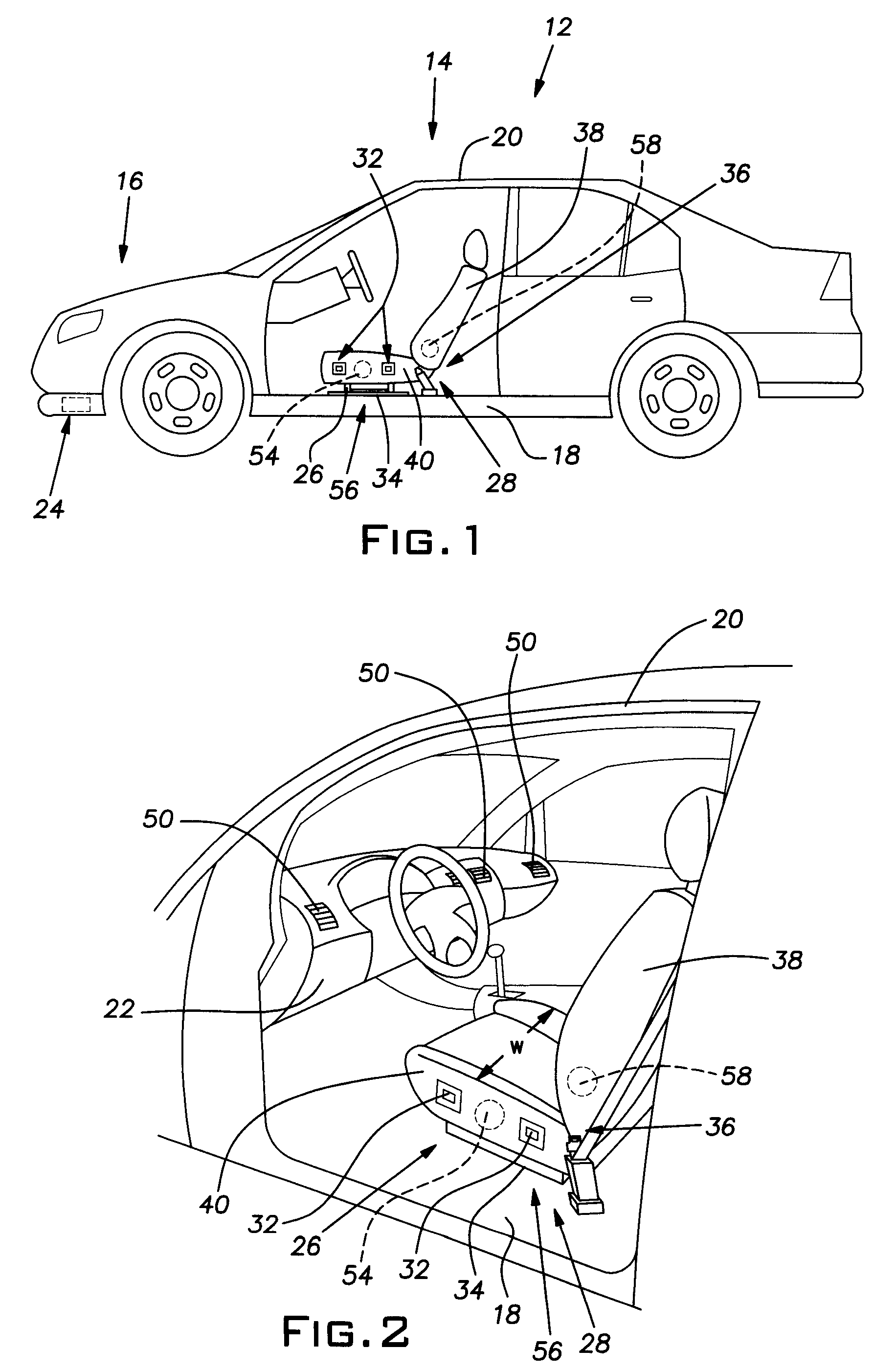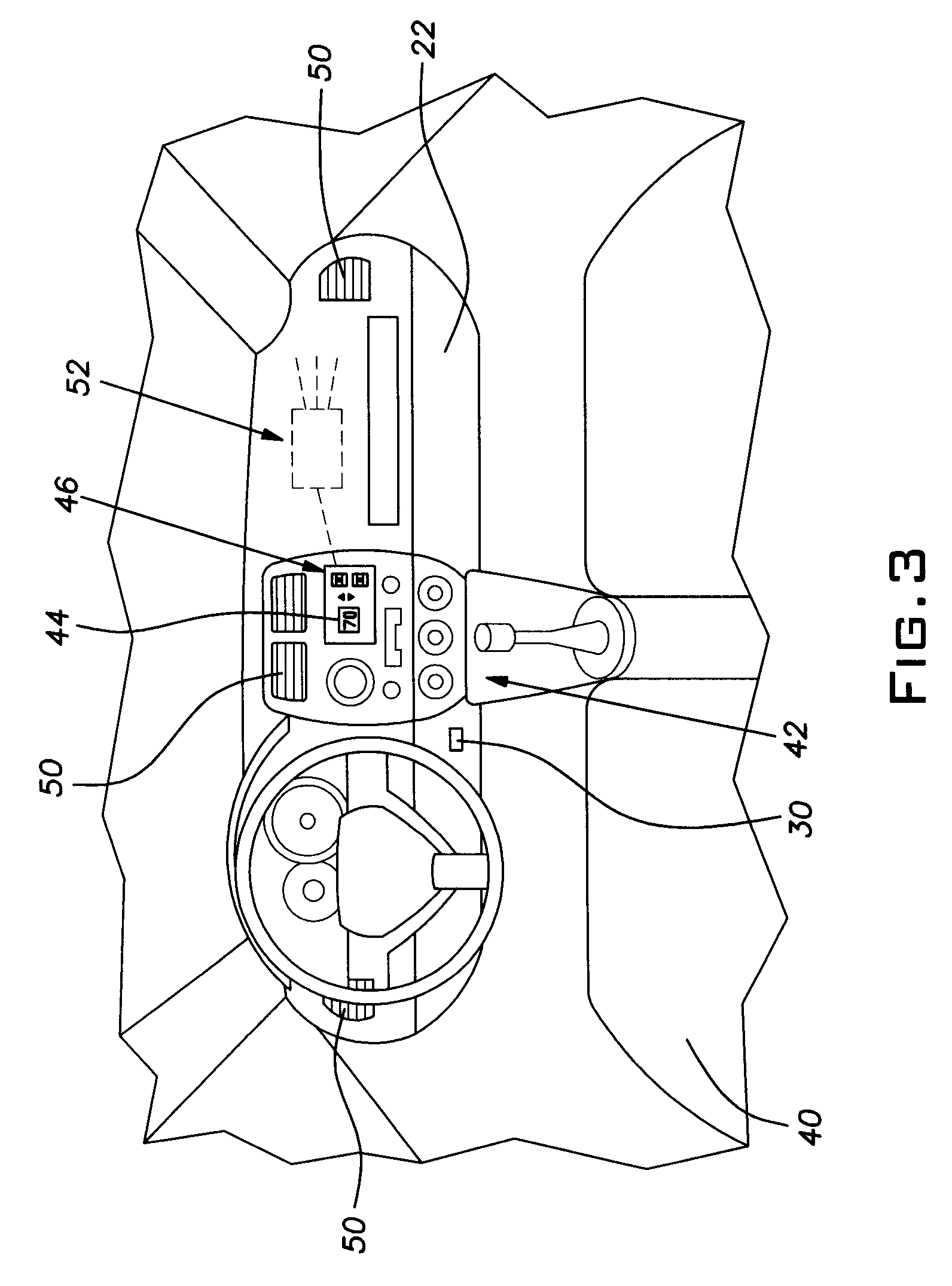Fitness factor for automatically adjusting a vehicle HVAC system
a technology of hvac system and fitness factor, which is applied in vehicle heating/cooling devices, vehicle components, transportation and packaging, etc., can solve the problems of controller not adjusting the hvac system, the temperature setting feels too warm or too cold, and the addition of sensors to the vehicle is costly and complicated. achieve the effect of comfortable cabin environmen
- Summary
- Abstract
- Description
- Claims
- Application Information
AI Technical Summary
Benefits of technology
Problems solved by technology
Method used
Image
Examples
Embodiment Construction
[0018]With reference to FIGS. 1-4, a climate control system 10 for a vehicle 12 according to the present invention is shown. The vehicle 12 includes a cabin 14 and an engine compartment 16. A floor 18, a roof 20, and a dashboard 22 are inside of the cabin 14. An ambient temperature sensor 24 is located near the engine compartment 16. A vehicle door has been removed for ease of viewing the cabin 14. Rails 26 that support a seat 28 are disposed on the floor, while a cabin temperature sensor 30 is located on the dashboard 22. Seat controls 32, seat slides 34, and a pivot point 36 are disposed on or around the seat 28. The seat 28 further includes a seat back 38 and a seat cushion 40.
[0019]An HVAC system 42 includes a temperature display 44, an input device 46 for changing a set temperature (Tset), and outlets 50 for dispersing conditioned air. Although not illustrated, the HVAC system 42 also includes a compressor, an evaporator, a dryer, a heater core, fans, and ducts, as is well know...
PUM
 Login to View More
Login to View More Abstract
Description
Claims
Application Information
 Login to View More
Login to View More - R&D
- Intellectual Property
- Life Sciences
- Materials
- Tech Scout
- Unparalleled Data Quality
- Higher Quality Content
- 60% Fewer Hallucinations
Browse by: Latest US Patents, China's latest patents, Technical Efficacy Thesaurus, Application Domain, Technology Topic, Popular Technical Reports.
© 2025 PatSnap. All rights reserved.Legal|Privacy policy|Modern Slavery Act Transparency Statement|Sitemap|About US| Contact US: help@patsnap.com



